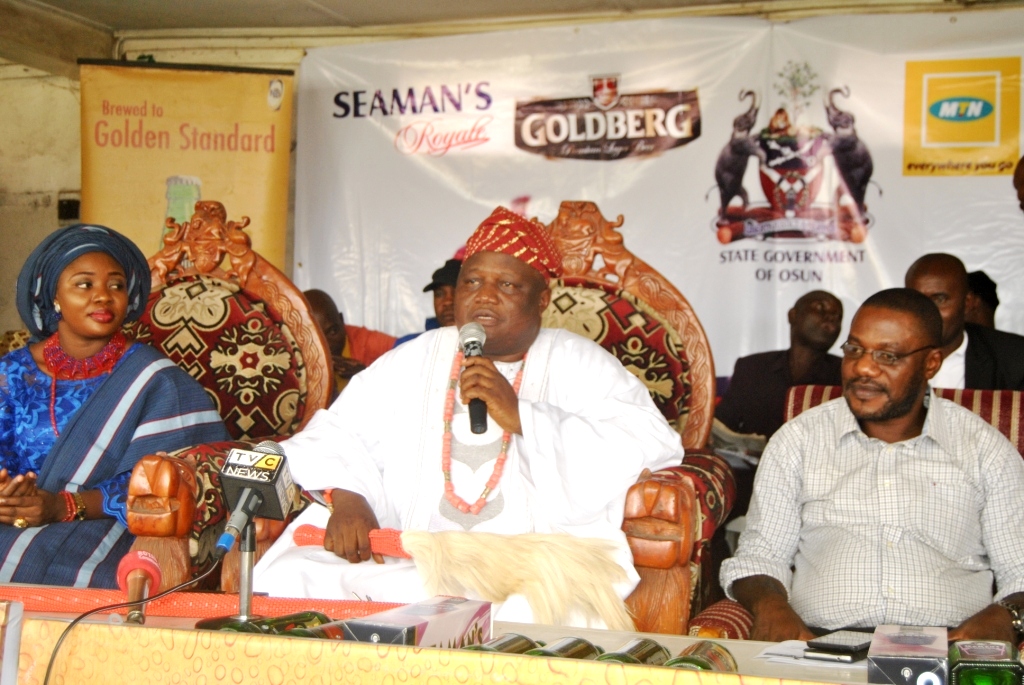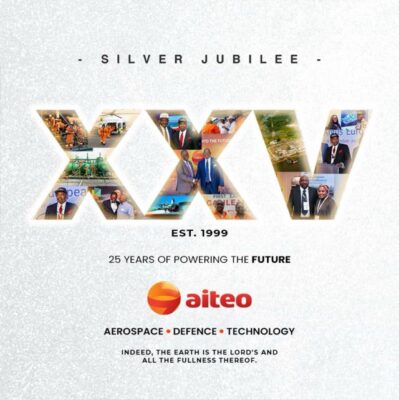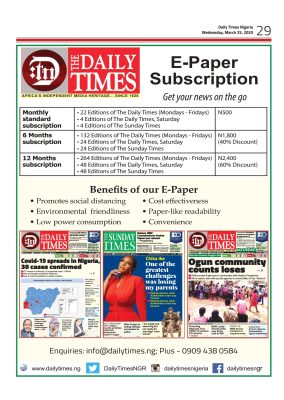in Lagos, It’S Rain, Rain. Go Away…
GBUBEMI GOD’S COVENANT SNR moved around the flood prone areas of Lagos and reports that Lagosians at worst hit zones are bracing themselves for the worst.
Apprehension is building up again among residents of flood prone areas in Lagos, as the rainy season gathers storm for its 2015 reign of terror over the state.
In spite of the enormous money and labour sunk into constructing drainage infrastructure by the successive governments of Lagos State under the ruling All Progressives Congress (APC) to check the juggernaut, the devastation wrought by the rain continually reveals that the best of the last two governments of Bola Ahmed Tinubu and out-going Babatunde Raji Fashola have not tackled the problem from its roots.
The season is one of intimidating problems associated with flooding all over the city and, when it happens, many homes are swamped, property worth fortunes are destroyed and, sometimes, human lives are involved, as the floods sweep away everything in their paths, leaving residents to recount tales of woes.
Added to their predicament is the storms that accompany the rains, and the devastating floods that ensue afterward. The rains in Lagos actually are not the major problems, but the floods resulting from the deluge, which normally lead to great loss of lives and property.
Lagos residents, both rich and poor, all dread a torrential rainfall, as it becomes a nightmare for commuters and motorists to manoeuver through roads, as most major highways are flooded and snarled by traffic gridlock.
Many times commuters are forced to trek long distances to their offices and market places; others, who cannot face the stress, return home after waiting for hours at various motor parks and bus stops in vain for commercial vehicles that would not come.
When Daily Times visited Mafoluku, one of the worst flood prone areas of Oshodi, it was observed that some residents have started a yearly routine of taking their important belongings to higher grounds and sojourning with friends and relations outside the area.
“Ah, this is what we do every year; we no longer see the raining season as a period of blessing,” borehole engineer, Fidelis Nwigwe, said. He was a tenant in this area, until he built his own house eleven years ago in the same zone. “As it is, the damage to our homes and our personal losses increase every year; sometimes it becomes far worse than what we expected,” Nwigwe added.
A source at the Ministry of the Environment & Physical Planning, who preferred anonymity, revealed that flooding in Lagos will take many decades of serious work and funding to overcome. He revealed that the worst areas during and after a rains include Mainland areas like Ogba, Ikeja, Orile-Agege, Alagbado, AIT Road, Iyana-Ipaja, Ipaja, Ayobo, Moshalashi, Kollington, Oke-Odo and Ahmadiyya. A portion of the road between Ahmadiyya and Ijaiye on the Lagos-Abeokuta Expressway has collapsed, leaving commuters stranded.
Daily Times investigation also revealed that other areas like Arowojobe and Akinwunmi estates, the Maryland parts of Ikeja GRA, Dolphin and Park View estates, Ikoyi, Victoria Island, Victoria Garden City (VGC), Ibeju-Lekki, Murtala Muhammed International Airport Road, Apapa-Oshodi Expressway, Yaba, Surulere, Gbagada, Oworonshoki, Mafoluku-Oshodi, Iyana-Ejigbo, Isheri-Osun, Berger-Alagbole Road, Ajegunle, Ikorodu Road, Ogijo and Odogunyan, are all on the flood risk list.
Parts of Ogun State, being areas that share boundaries with Lagos, that were submerged included Akute, Alagbole, Olambe and Ojodu-Abiodun, among others, are also not spared.
Our source at Alausa pointed to the dumping of waste materials in drainages as the foremost issue to be addressed in combating the floods. It said further, “If you take a look at the flood whenever it rains, what you find is thousands of water sachets, rags, shoes, stationeries and all sorts of domestic wastes, which usually block the drains, pushing the water to road surfaces, which eventually lead to pot-holes and craters. Then you ask yourself ‘how did these items find their ways into the drainages?”
But on the contrary, an expert on Coast and Small Island (CSI) matters, Mr. Zenob Emmanuel, insisted that government is to blame for the recurrent flood disasters that happen in Lagos State annually.
“The ‘City of Excellence’ remains fragile and vulnerable to the rains, and endangers lives and properties year-in and year-out because the government has not approached the flooding problem with any sense of professionalism
“Whenever it rains, many areas in Lagos and some parts of Ogun State experience torrential rainfall that leaves untold hardship on the people due to bad city planning, compounded by bad roads that leave the affected areas submerged in flood,” he lamented.
Government has itself to blame
“Lagos apparently has itself to blame for this state of affairs. Much of the state lies below sea level and, despite this, it has embarked on unprecedented land reclamation. One result is the enormous environmental damage, as the indiscriminate draining has tilted the balance in the ecosystem.
“As a proactive and responsive administration that is committed to the overall well-being of the residents, this alert becomes necessary to sensitise all the people, especially those that reside in the flood-prone areas, to be on the alert in order to prevent the loss of lives and property,” he advised.
It would be recalled that a study on Flood Management and Governance Structure in Lagos on ‘Lookman Oshodi’ recorded that flood is a natural threat that makes no distinction in the status of any society in the world. Its occurrence in different parts of the world has shown that it is a global phenomenon that does not ostracise any community.
The common characteristics of all these disasters are massive devastation to the physical and emotional fabrics of the respective environment.
In many jurisdictions, flood threats cannot be totally avoided, but minimizing its destructive impacts on lives and the environment becomes a strong priority for many governments.
Issues to be addressed
There is lack of standard or regulatory framework to manage the development and delivery of tertiary and many secondary drainage facilities at the community level.
In many communities in Lagos, especially on the Mainland, construction and management of tertiary drains are at the discretion of individual plot owners.
The decision to construct and manage depends on how compelling and affordable is the drainage channel to the respective plot owners. Equally, construction and management of secondary drains are through contributions from the community members.
The contributions are often meager and erratic, leading to poor quality drains and mostly, abandonment. At individual and community levels, the construc tion and management of the drains are executed without any development guide, approved layout plan, regulations or any prescribed operational standard.
In the schedule of responsibilities for the Lagos State Ministry of the Environment, construction and maintenance of secondary channels are integral parts of the ministry’s duties.
The provision of drainage infrastructure is not at commensurate level with the rate of urbanization and population growth in the state.
Massive and incessant land reclamation and dredging projects across the water bodies in the state are with little or no regards for environmental impacts of such projects.








